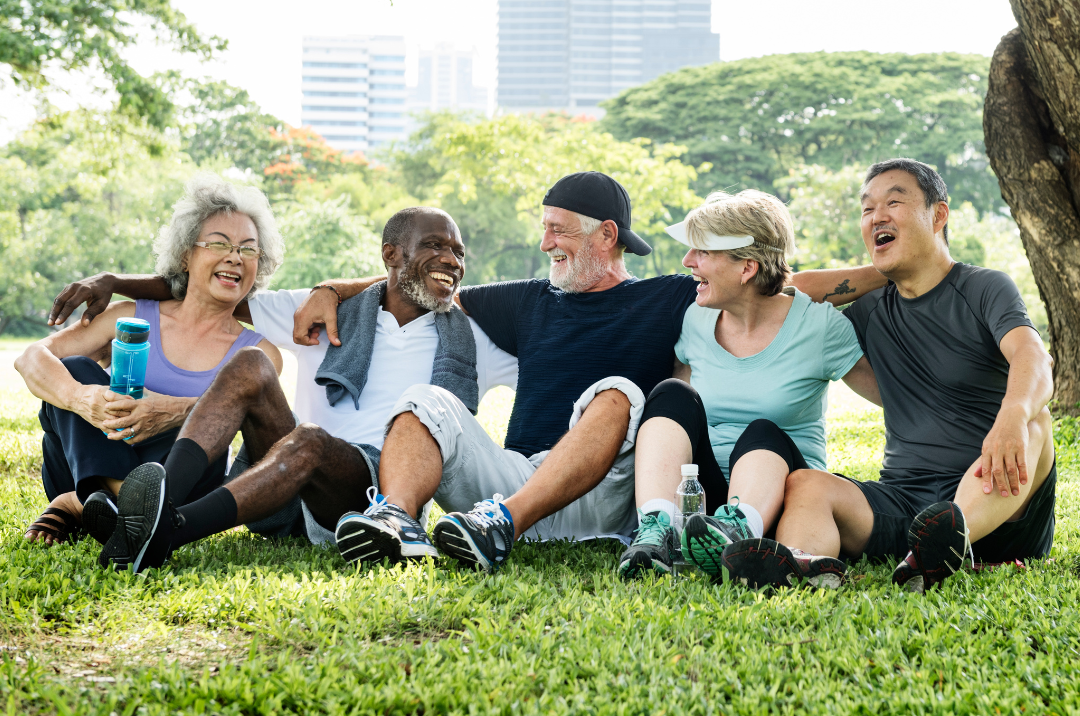Is your elderly loved one ready to reap the many benefits of daily physical activity but doesn’t know where to start? Have you spoken with their doctor about any limitations he/she may have or areas they should be focusing on?
Exercise is the maintenance of our bodies and our minds and can make a big difference in the quality of life of your senior. Regular exercise will not only help your elderly loved one strengthen their muscles and improve their balance, it will also help them maintain their independence and improve brain function! You can read more about the benefits in Part 1 of this blog. In Part 2, we discussed some great examples of daily physical activities your elderly loved one can engage in and the benefits of those exercises.
For Part 3 of Seniors & Exercise, we are going to dive a little deeper into the specific types of exercising: Cardio, Strength, Balance and Flexibility and how they may help your senior regain and/or maintain their independence and quality of life.
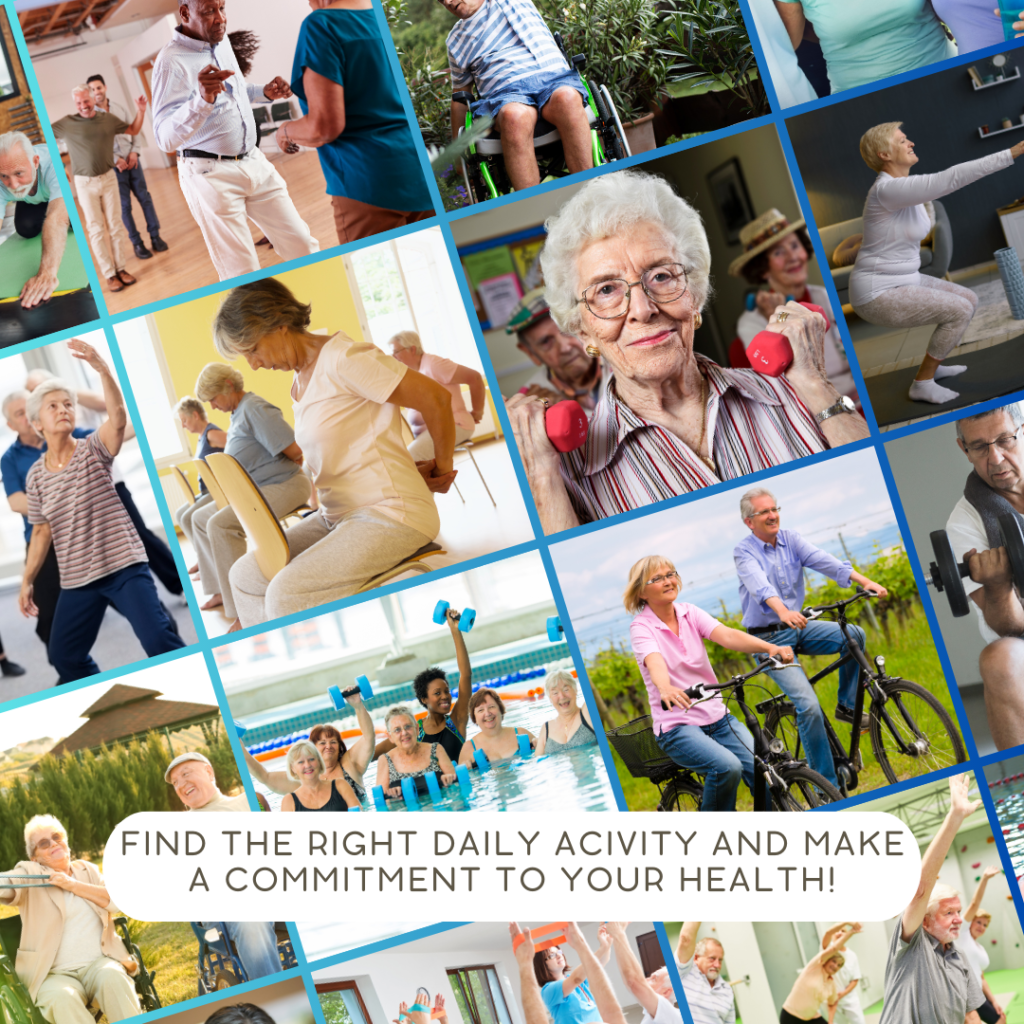
Cardio: also known as aerobic exercise, is any rhythmic activity that increases your heart rate. Here are our best examples of cardio activities for your senior:
- Walking: is the simplest form of cardio exercise for elderly loved one. It can be modified to meet the specific needs of any person; setting your own pace or distance, using a cane or a walker, or changing your location and scenery. *walking, no matter the location, can be a great chance for your senior to socialize, if they invite a friend.
- Nature Walks: in the mountains, by a river or at a beach are also great examples of cardio exercise. The different terrains will also help your senior in other areas of exercise such as balance, strength and agility. *spending the time outdoors may also improve mood and reduce depression or anxiety.
- Cycling: can be a great option for your older adult to engage in cardio exercise, whether they use a stationary or outdoor bicycle. Since cycling is a low-impact activity, it can be very affective for seniors who struggle with joint and muscle pain or dysfunction.
- Water Aerobics/Swimming: are the best ways for your elderly loved one to get cardio exercise if they suffer from joint pain or arthritis and other similar ailments. These physical activities are very low-impact and are great ways to improve strength and balance as well. Even going for a walk in a swimming pool will help you reap the benefits of aqua fitness. *join a class at your local Rec Centre – go with a friend or even alone.
- Dancing: is another good option for your senior to engage in cardio exercise. Whether it’s line dancing, Zumba or salsa dancing, this activity will get those large muscle groups moving and elevate your heart rate. It is also a lot of fun! *join a class or follow along with a YouTube video in the comfort of your own home.
Strength: staying strong and active can help delay the inevitable reduced muscle and bone mass as we get older. Here are our best examples for how your elderly one can keep their muscles and bones strong:
- Body Weight Exercises: are fully accessible and convenient making them a good option for strength exercises. Using only themselves, and the force of gravity, your senior can strengthen their muscles and bones in the comfort of their own home. Squats, sit-to-stands, and bridges are great examples of body weight exercises.
- Free Weights & Resistance Bands: can be incorporated into your older adults body weight workout to provide more resistance. If your seniors body weight exercises are getting too easy, this would be a good time to introduce free weights and resistance bands. The chest-pull, bent over rows and the bicep curl are good examples of free weight and resistance band exercises.*always start from smallest weight or least resistance and work your way up.
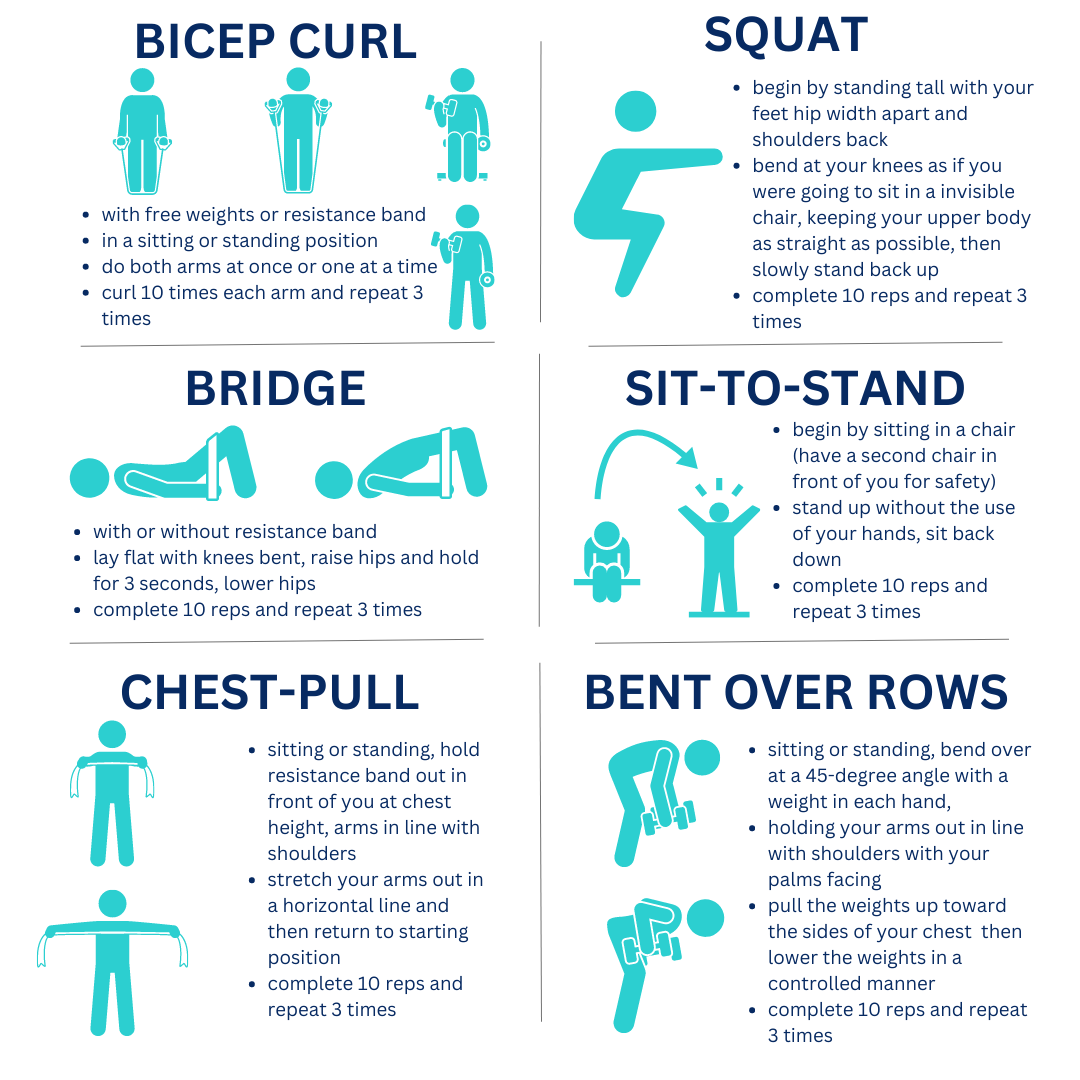
Balance and Flexibility: multiple systems work together to help us maintain our balance, including input from vision, the inner ear and touch systems. Stretches that target the body parts – shoulders, hips and legs – that commonly contribute to balance problems are key . Flexibility is important for your seniors’ independence, mobility and the ability to strengthen their body throughout its full range of motion. Balance and flexibility are critical for decreasing the energy costs of standing and walking as well as preventing falls which lead to fractures, head injuries and other problems that affect both mental and physical health. Here are our best examples for how your older adult can increase and maintain their balance and flexibility:
- Yoga or Chair Yoga: as we discussed in Part 2, yoga or chair yoga are great ways to improve balance and flexibility as well as strengthen your seniors’ muscles and core. This is also another opportunity for your elderly loved one to socialize if they join a class at your local seniors’ center or rec center. *you can also do this activity alone or with a friend at home, YouTube has many videos to follow along with.
- Tai Chi: this ancient mind-body exercise has proven to have many health benefits, including improving the overall functionality of the body. Tai chi helps the body improve awareness of itself in space while combining gentle breathing to relax the mind and body. This is a very easy and safe way for your elderly loved one to improve their balance, flexibility and mood. *join a class or do it alone or with a friend in the comfort of your own home
- Stretching: whether they sit or stand, your seniors’ body needs to be stretched! See graphic below for some good examples…
- Lower Body Strength Training: strengthening the hips and legs is an effective way to prevent falls. We have included a few examples in the graphic below…
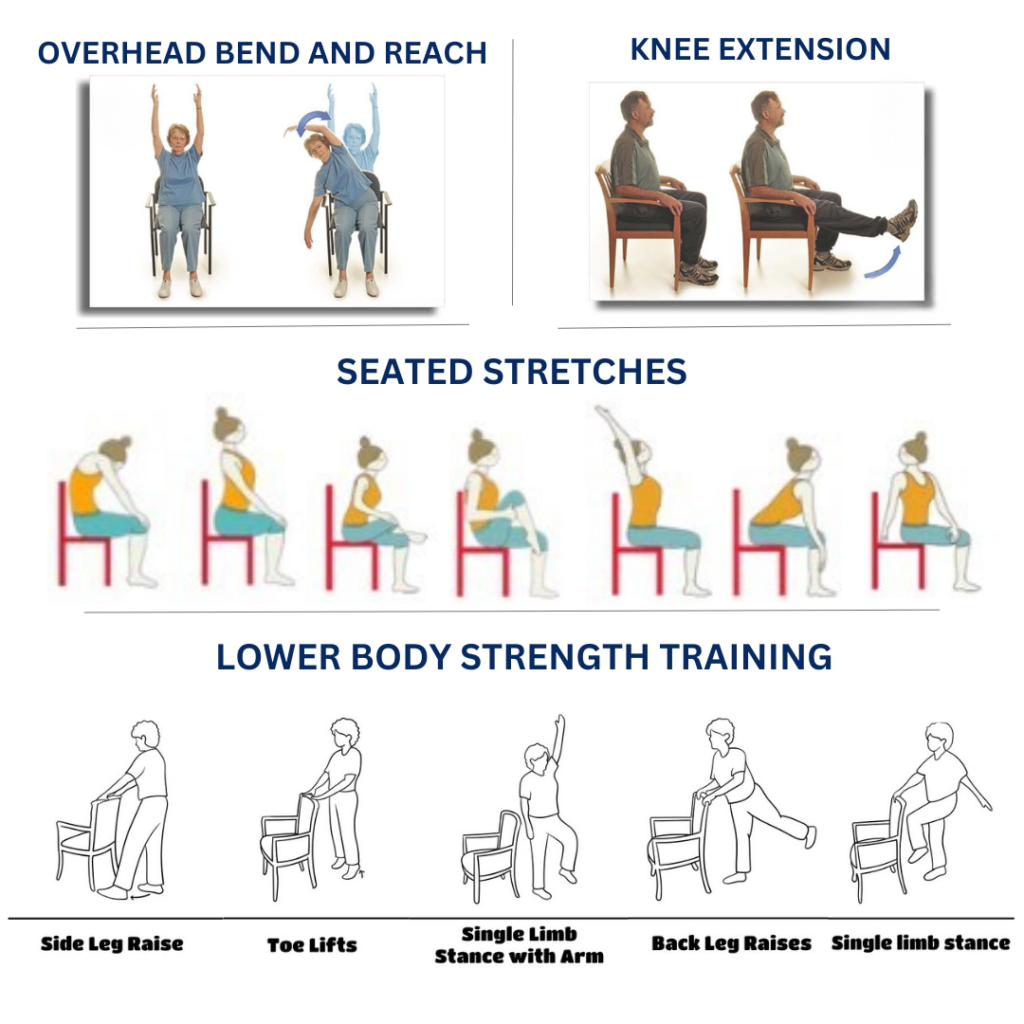
For the best results and for your elderly loved one to maintain their independence, it is important to incorporate all of these exercises into their daily physical activities. Always consider your seniors daily activities that are necessary to living when choosing the best exercises for them. This will help prevent the need for assistance in the future.
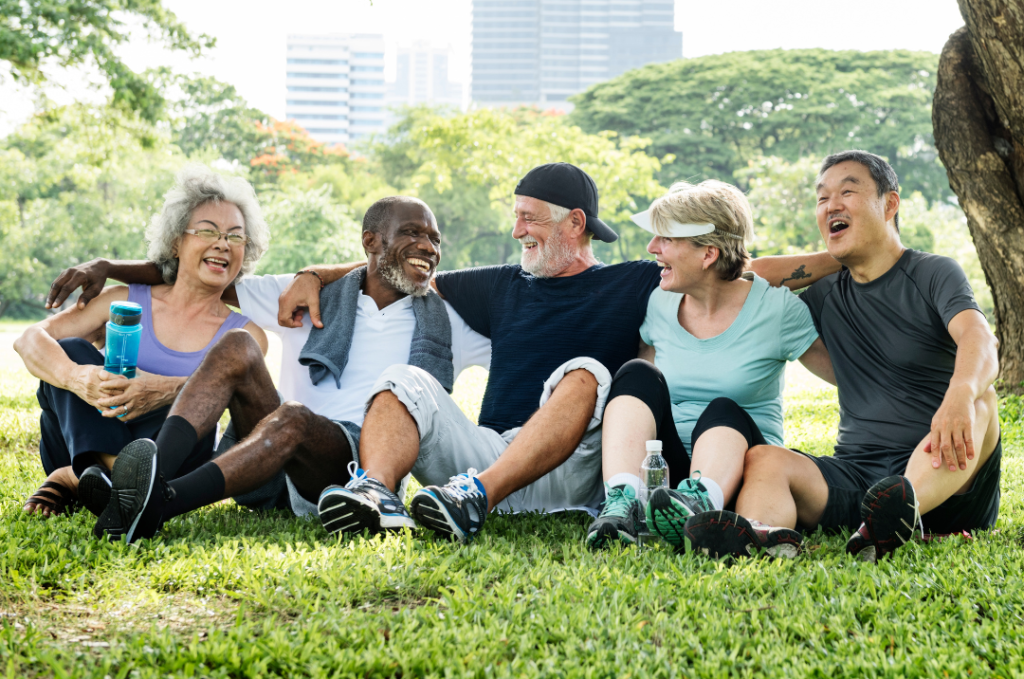
Did any of these suggestions work of you? If you found this series helpful and informative, please feel free to share it amongst your peers. Follow our blog and our social media for more informative articles, updates on our services, community building and to connect with us! FaceBook Twitter Instagram LinkedIn
Surrey-North Delta Meals on Wheels is supported by donations from the community! These donations are vital to our charity’s operations, we could not continue to serve those in need of our service without them. All donations are tax deductible and donors will be issued a tax receipt. Make a donation to our Sponsor a Senior fund to help a senior in need get the nutrition they require or to our General Fund to help cover our operating costs: DONATE NOW

